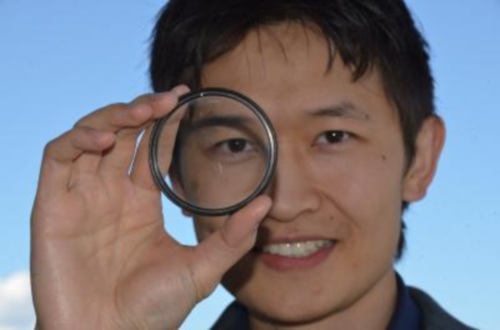Kenneth Chau, an assistant professor in the School of Engineering at the University of British Columbia’s Okanagan campus, with help from a team of U.S.-based researchers, has developed a substance that can be affixed to surfaces and turn them into flat lenses for ultraviolet light imaging of biological specimens.

Kenneth Chau has developed a negative-index material that can be sprayed onto surfaces to act as a lens.
This is considered a breakthrough because nearly all lenses, whether it be a contact lens for the human eye, or that which is used for a microscope, are curved, which limits the amount of light that enters.
“The idea of a flat lens goes way back to the 1960s when a Russian physicist came up with the theory,” Chau says. “The challenge is that there are no naturally occurring materials to make that type of flat lens. Through trial and error, and years of research, we have come up with a fairly simple recipe for a spray-on material that can act as that flat lens.”
Simply put—Chau’s solution could not only revolutionize the way optical lenses are used, but how they are manufactured too.
“Curved lenses always have a limited aperture,” he explains. “With a flat lens, suddenly you can make lenses with an arbitrary aperture size – perhaps as big as a football field.”
Chau does admit, though, that this is only the first step, and that a lot of research still needs to be done.
“This is the closest validation we have of the original flat lens theory,” he explains. “The recipe, now that we've got it working, is simple and cost-effective. Our next step is to extrapolate this technique further, explore the effect to the fullest, and advance it as far as we can take it.”
The next step for Chau and his team is to test the material out in devices like cameras and scanners.
To learn more, check out the team’s work in the May 23 issue of the journal Nature.
Story via: eurekalert.org
Advertisement
Learn more about Electronic Products Magazine





